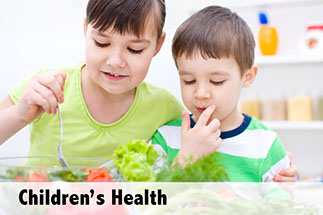CONDITIONS
SYMPTOM CHECKER
Male
Female
Child
Arm, Hand & Shoulder Concerns
Legs & Feet Concerns
Dental & Mouth Concerns
Ear & Nose
Eye Conditions
Head Conditions
Arm, Hand & Shoulder Concerns
Legs & Feet Concerns
Front
Back
Arm, Hand & Shoulder Concerns
Dental & Mouth Concerns
Ear & Nose
Eye Conditions
Head Conditions
Arm, Hand & Shoulder Concerns
Dental & Mouth Concerns
Ear & Nose
Eye Conditions
Head Conditions
Front
Back
Arm, Hand & Shoulder Concerns
Neck Links
Head & Neck Concerns
Arm, Hand & Shoulder Concerns
Neck Links
Head & Neck Concerns
Front
Back
Online Clinic
Wise Healthcare
Colds & Flu
Colds and flu are infections of the nose and throat. Both are caused by viruses.
It can be hard to tell if your child has a cold or the flu. Why? They both have the same type of symptoms. But symptoms for the flu are worse than ones for a cold. Flu symptoms come on fast. Ones for a cold come on slower.
Signs & Symptoms
Signs of Reye’s Syndrome
Be on the lookout for Reye’s Syndrome after the flu or chickenpox. Reye’s Syndrome does not happen very often. But you should know about it. Look for these signs:
• Vomiting over and over again. Or vomiting that does not stop.
• Loss of pep and energy.
• Acting very, very sleepy.
• Acting very, very cranky.
• Striking out at others.
• Acting strange.
• Convulsions.
Prevention
Antibiotics do not treat colds and flu. Most colds clear up in about a week. Sometimes, a cold lasts up to 2 weeks.
Fever and most flu symptoms usually go away after 5 days, but coughing and feeling weak can last up to 2 weeks.
To Help Prevent Colds and Flu
• Take your child for a yearly flu vaccine as advised.
• Don’t smoke or let your child smoke.
• Keep your child away from persons who have the flu or a cold.
• See that your child eats and sleeps well and gets lots of exercise.
Tell your child to do these things:
• Wash your hands often. Keep them away from your nose, eyes, and mouth.
• Cover your nose when you sneeze. Use a handkerchief or tissues when you sneeze, cough, or blow your nose. This helps prevent passing germs to others.
Questions to Ask
Question 1
With or after the flu, does your child have 1 or more of these signs of meningitis?
• Very bad headache that lasts. Stiff neck.
• High fever. Nausea or vomiting.
• Acts very sleepy and/or strange.
• Red or purple, bumpy skin rash that does not fade when you press on it.
Get medical care without delay. If symptoms are life threatening go to the ER or call 9-1-1. Don’t call 9-1-1 or use the ER if symptoms do not threaten life. Ask your doctor ahead of time where you should go for a problem that needs prompt care, but not emergency care.
Question 2
Does your child have 1 or more of these problems with a cold?
• Blue color around the lips, fingernails, or skin.
• Quick or trouble breathing. Grunting sounds with breathing.
• Fever of 100.4ºF or higher in a baby less than 3 months old. Fever of 104ºF or higher in a child between 3 months and 3 years old.
• Severe cough. Severe wheezing.
Get medical care without delay. If symptoms are life threatening go to the ER or call 9-1-1. Don’t call 9-1-1 or use the ER if symptoms do not threaten life. Ask your doctor ahead of time where you should go for a problem that needs prompt care, but not emergency care.
Question 3
After the flu, does your child have signs of Reye’s Syndrome?
Get medical care without delay. If symptoms are life threatening go to the ER or call 9-1-1. Don’t call 9-1-1 or use the ER if symptoms do not threaten life. Ask your doctor ahead of time where you should go for a problem that needs prompt care, but not emergency care.
Question 4
With or after the flu, does your child have a very hard time breathing or is he or she coughing up blood?
Get medical care without delay. If symptoms are life threatening go to the ER or call 9-1-1. Don’t call 9-1-1 or use the ER if symptoms do not threaten life. Ask your doctor ahead of time where you should go for a problem that needs prompt care, but not emergency care.
Question 5
Does your child have any of these problems?
• Wheezing.
• An earache or tugging at the ears.
• Swollen, painful glands in the neck.
• Fever between 102.2ºF and up to 104ºF in a child between 3 months and 3 years old.
• Fever over 104ºF in a child age 3 years and older.
You should be seen by your doctor for medical advice. Contact your doctor or health care provider to find out how soon you should be seen.
Question 6
Does your child have any of these problems?
• Yellow or green mucus drains from the eyes.
• He or she coughs up thick, yellow-green, or rust-colored mucus. Or mucus like this drains from the nose for more than 24 hours.
• A bad smell from the throat, nose, or ears.
You should be seen by your doctor for medical advice. Contact your doctor or health care provider to find out how soon you should be seen.
Question 7
Is your child’s throat very sore or bright red? Or does it have white spots at the back?
You should be seen by your doctor for medical advice. Contact your doctor or health care provider to find out how soon you should be seen.
Question 8
Does your child have pain or swelling over the sinuses that gets worse when they bend over or move their head? (The sinuses are behind the cheekbones, eyes, and forehead.) Watch out for this especially when your child also has a fever.
You should be seen by your doctor for medical advice. Contact your doctor or health care provider to find out how soon you should be seen.
Question 9
Did a deer tick bite your child 10 days to 3 weeks before he or she got sick? Was your child in the woods or someplace else where ticks live? (Note: Lyme disease, caused by a deer tick bite, can mimic flu symptoms.
Call your doctor or health care provider and state the problem. He or she can decide what you should do.
Question 10
Is your child’s fever or coughing getting worse?
Call your doctor or health care provider and state the problem. He or she can decide what you should do.
Use Self-Care:
You can probably take care of the problem yourself if you answered NO to all the questions. Use the “Self-Care” measures that are listed. Call your doctor if you don’t feel better soon, though. You may have some other problem.
Self-Care
Have your child do these things:
• Rest.
• Drink lots of liquids. They help clear out the respiratory tract. This can help prevent other problems, like bronchitis.
• Eat chicken soup. It helps clear out mucus.
If your child’s throat is sore, have him or her do these things:
• Gargle every few hours with 1/4 teaspoon of salt in 1/2 cup of warm water, if able to. (A child can usually do this starting at age 6.)
• Suck on a piece of hard candy or cough drop once in a while. (Don’t give these to children under 5 years old.)
Things you can do:
• Try to clear your child’s nose. This is very important in babies under 6 months old, because some can’t breathe through their mouths yet. Also, they can’t breast or bottle-feed if they can’t breathe through the nose. To clear your child’s nose:
– Use an over-the-counter spray or drops for the nose made of salt and water. An example is Ocean® brand. Follow the label’s advice or that of your child’s doctor.
– For a baby who can’t blow his or her nose, leave the salt drops in for 1 minute. Then use a soft rubber suction bulb to draw out the mucus. Lie the baby on his or her back. Aim the bulb straight down, not at an angle! (You can get a suction bulb at the drug store.) Or use a cotton swab to wipe the mucus out. Don’t put the suction bulb or cotton swab too far into the nose. You could cause a nosebleed.
– For a child who can blow his or her own nose, have the child do it 1 minute after the salt drops are in.
• Put a cool-mist vaporizer or humidifier in your child’s room. Use distilled (not tap) water. Clean it every day.
• For fever and muscle aches, give your child acetaminophen or ibuprofen. Make sure you give the right kind and dose for your child’s weight. (Note: Do not give aspirin. Aspirin and other medicines that have salicylates have been linked to Reye’s Syndrome.
• Check with your child’s doctor about using over-the-counter medicines for colds and flu for children under age 2.
• Call your child’s doctor if he or she gets a fever after a cold or after the flu has gone away.
• Washing the hands often helps stop spreading the flu. Have your child wash his or her hands:
– After playing with others.
– When he or she gets home from school.
– After blowing his or her nose.
– After touching toys or other people’s things.
This website is not meant to substitute for expert medical advice or treatment. Follow your doctor’s or health care provider’s advice if it differs from what is given in this guide.
The American Institute for Preventive Medicine (AIPM) is not responsible for the availability or content of external sites, nor does AIPM endorse them. Also, it is the responsibility of the user to examine the copyright and licensing restrictions of external pages and to secure all necessary permission.
The content on this website is proprietary. You may not modify, copy, reproduce, republish, upload, post, transmit, or distribute, in any manner, the material on the website without the written permission of AIPM.
2021 © American Institute for Preventive Medicine - All Rights Reserved. Disclaimer | www.HealthyLife.com

















































